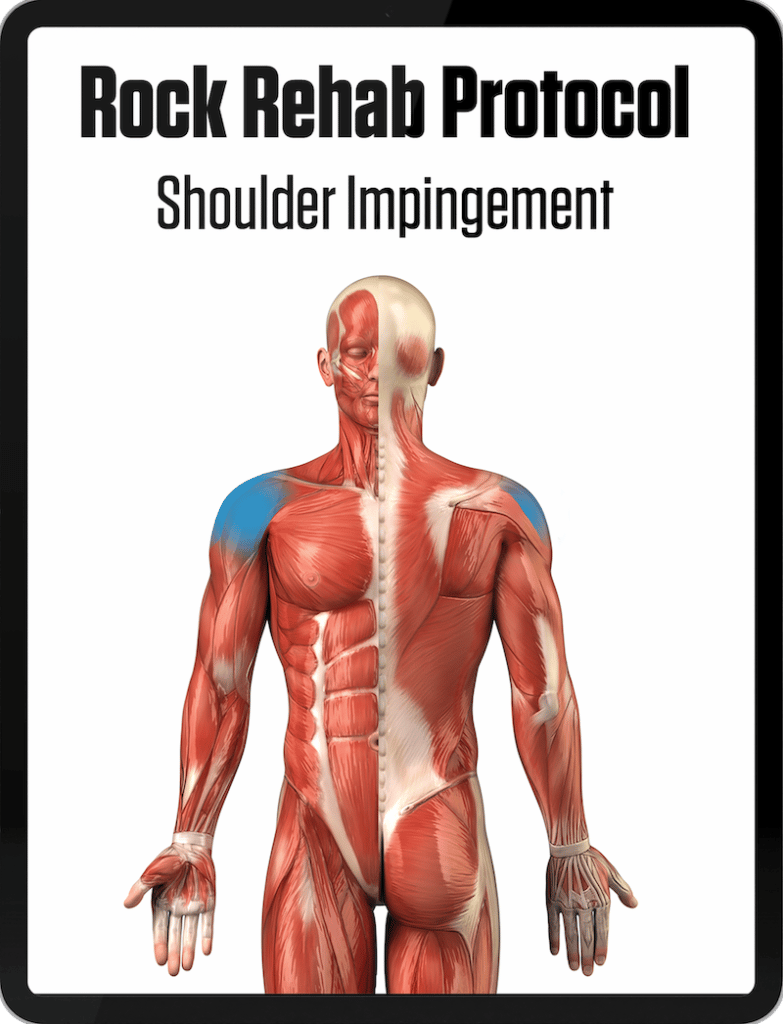Climbing Injury Prevention – Subacromial Pain Syndrome (Shoulder Impingement)

Cause
The primary rotator cuff tendon in the shoulder, which attaches the upper arm bone to the shoulder blade, slides through a narrow passageway called the subacromial space. Repetitively moving the shoulder into stressful or suboptimal positions can cause this space to shrink and increase pressure on the tendon, which can generate pain. These aggravating movement patterns include climbing with the elbow in a chicken-wing position, mantling over the lip of a boulder or ledge, and jamming cracks with the thumb down. This injury was historically known as shoulder impingement but is now termed subacromial pain syndrome.
Instructions
Start position: Wrap a full-length resistance band around your torso Bend your knees and hips and lean your trunk forward to approximately 45 degrees. The closer to the floor that you can angle your trunk, the more challenging the exercise will be.

Sasha DiGiulian Letter T Photo A

Sasha DiGiulian Letter T Photo B
How to Wrap the Band

Sasha DiGiulian Band Wrap A

Sasha DiGiulian Band Wrap B

Sasha DiGiulian Band Wrap C
A. Start with the arms straight down by your side and palms rotated forward.
B. Engage your shoulder blade muscles and bring your arms into the air to form the letter T. Make sure that the thumbs stay pointed into the air.
What It Does
Activates the middle trapezius (T), lower trapezius (Y) and the rotator cuff (L) muscles that provide support and protect your shoulder while climbing. The bent knee and forward trunk for position simulates more closely the body during overhang climbing.
Frequency
3 sets of 8 repetitions once per day.



